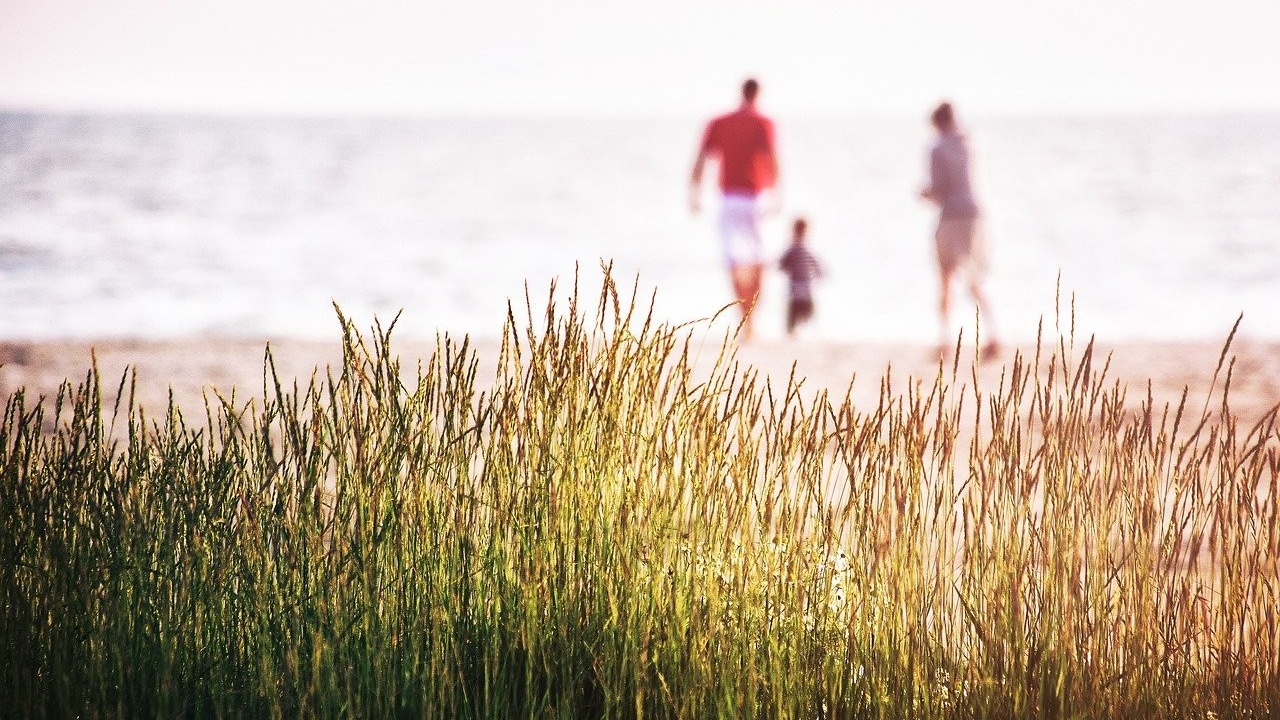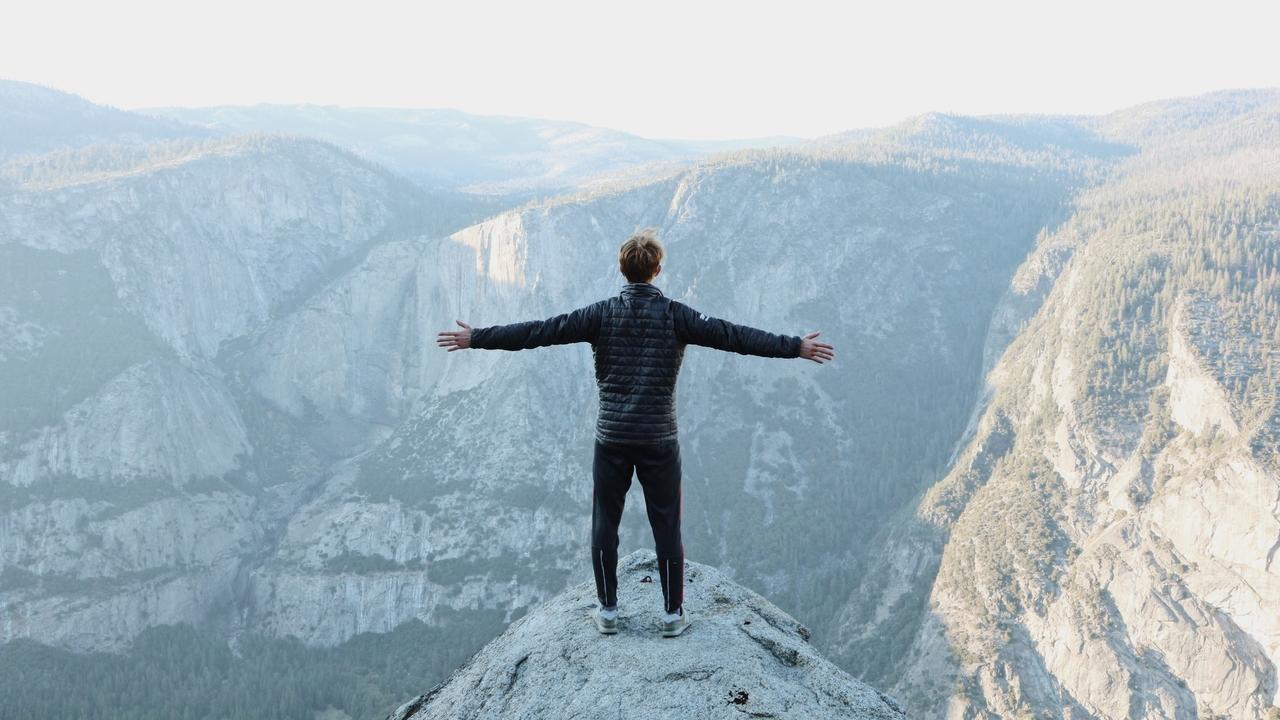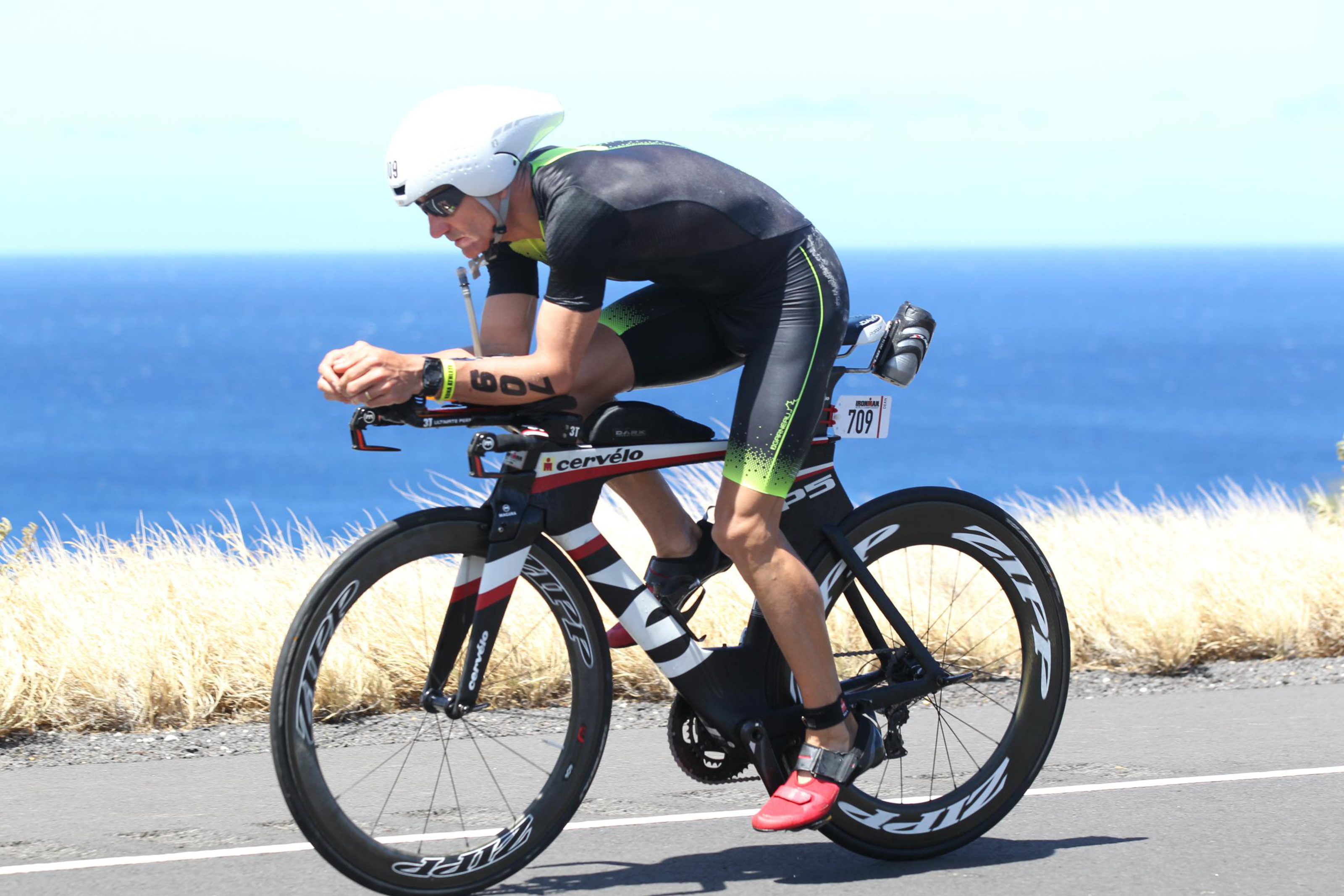Swim, Over-bike, Walk

As triathletes, one of the things we have to wrap our minds around is that triathlon must be treated as one sport and not three separate sports thrown together on one day. Obviously, there are three disciplines – swimming, biking, and running; but each discipline is approached much differently in a triathlon than as individual sports.
In this blog, we are focusing specifically on the bike portion of the triathlon, because that’s where many athletes destroy their race. In most triathlons, the bike portion of the race is the longest portion, both in distance and in time. Athlete’s rationalize that since it’s the highest percentage of the race day, then that’s the leg that has to be the best and the fastest.
When a triathlete tells us they had a great bike split, but fell apart on the run, we have to hold our tongues. We want to say, “No you didn’t.” There are a plethora of reasons for the run to fall apart in a triathlon, but over-biking ensures falling apart in the run.
Let’s t...
Know when to Hold and when to Fold

Kenny Rogers' song “Know When to Fold ‘Em,” has nothing to do with endurance sports training, however, when it comes to training and racing, it’s important for athletes to know when to hold and when to fold.
Recently, one of our athletes was in a training block preparing for an event that was only about three weeks away. Her knee began bothering her. As athletes, we hate when our training is interrupted by injury. We are constantly talking with each other about this or that ache or pain and deciding whether to push through or halt training. It’s hard for us to halt our training, but we’ve learned the hard way, that if precautions aren’t taken at the onset of pain, what may have been a sideline from training for a few days, becomes weeks or months of recovery.
I (Paula) am the poster child for why pain should not be ignored. In 2013, I did my first intense marathon training cycle with a time goal in mind. I had a few marathons under my belt. The goal of each of these marathons ...
Work Life Balance

As endurance athletes, we invest a lot in our hobby. Not only financially - on shoes, bikes, subscriptions, health club memberships, coaching, entry fees, physical therapy, and more. But, we also invest a lot of time. Endurance sports imply exercising for a long duration. In addition to the actual workouts, we also do conditioning, stretching, icing, foam rolling and more to prevent injuries or prepare our bodies to increase either speed, distance, or both.
To say the least, endurance sports takes a commitment of time.
How do you balance endurance sports with all of your other life commitments?
Paula and I have found ways throughout our marriage to balance training and racing with our careers and family.
Early in our marriage, Paula and I worked hard to start our careers and start raising a family. During those early years, our exercise was limited and squeezed in when possible. I would wake up before the kids and head out for a quick three mile run most mornings. Being...
Setting Expectations

Every athlete has unique aspirations, levels of fitness, and God-given abilities. When working with athletes, it may take a while to communicate and analyze to set a baseline. Often, athletes set big goals, and that is great. A big goal for some may not seem big for others. It is important to understand the starting point when mapping out a target. Paula and I have learned over the years to set reasonable yet challenging goals for ourselves based on our individual fitness. Here are some of the big goals we have had for ourselves:
Paula
- Run a 10-minute mile
- Run an 8-minute mile – (now she can do a half-marathon in 8 minutes/mile)
- Break 1:50 in the half marathon – (ran 1:46)
- Run Boston – (Has now qualified twice and completed the 2020 Boston Virtual)
- Complete an Ironman (finished Ironman Louisville in 2017)
- Complete the Abbott World Marathon Challenge – (in progress)
Dean
- Break 1:20 in the half marathon – (ran 1:17)
- Break 2:50 in the marathon – (ran 2:48)
- Run a sub- ...
Heat Acclimation

Race preparation is about more than just training. It includes every aspect of your race day experience. In a previous story, we talked about race day reconnaissance. On our website we offer a free race plan template. In this article, we are going deeper into preparing for racing in hot conditions.
Hot is a relative term. For the purposes of this article, hot implies hotter than what you are accustomed to where you live and train. Each person’s concept of hot may be different. But we all have our comfort zone and there are places and times of the year where the heat index becomes uncomfortable and potentially dangerous.
At the time of this writing, it is cold in Kentucky. Traveling south for a race introduces hotter conditions that we must be prepared for.
I have learned over the years the importance of preparing for race day heat. Most of my hot races have been Ironman events. Ironman Louisville used to be in August and then it shifted to October. Ironman Texas is in May...
Lost on the Beach

Not too long ago, we arrived at the beach for a short fall vacation. We checked into our condo around 4 PM and decided to walk down to the beach to check it out. The beaches we have visited before on the Atlantic coast were flat and great for running. That appeared to be the case this time. Paula was planning to run two hours and fifteen minutes. I was planning to run but didn’t have anything specific in mind. I had been nursing a hamstring issue, so I scaled back listening to my body (get to the starting line healthy).
We went back to the condo and began getting ready to run. We both realized that night was approaching, and we may be finishing in the dark. What could go wrong?
We both headed south on the beach into the head wind. Starting “into the head wind” is a good rule of thumb to not turn around miles down the beach and realize how strong the wind will be on the return.
Paula and I run at different paces most of the time. I ran on ahead. Several miles down the beac...
Traveling and Training

Recently, Paula and I traveled from Kentucky to Atlanta for a church event. We arrived late on Friday night and slept in on Saturday morning. When we awoke, we decided to squeeze in a run before heading out for brunch and then to the church. Since we were pressed for time, I shortened my normal warmup routine. I also realized I left my roller and rollerball at home.
"But hey, I’m just doing a short easy run. It will be okay."
I pulled up Google Maps and searched for “greenway”. When out of town, this has been a helpful way to find places to run. It is surprising sometimes how close a path may be.
We walked out of the hotel and put our masks in our car (for those reading this in the future, we are living through COVID-19). Then we took off on our run.
If you are not familiar with the Atlanta area, you may be surprised at how hilly it is. Immediately out of the hotel parking lot in the direction of the greenway was a very steep hill. I didn’t remember this when we arrived...
Value of Post-Race Reflection

If you compete in short distance races - 5K, 10K, or sprint triathlons, you could race several times per month. But if you go long, you will only do a few per year. In either case, every day and every race is a learning opportunity.
Paula and I not only encourage our athletes to build a race plan before a big race, but also a post-race journal to document the experience.
For a race plan template, click here.
The post-race journal should include how well your race plan worked on race day. Be sure to answer these type questions:
- Did your nutrition work?
- Did your pacing work?
- Did your training prepare you for the weather and course conditions?
- What went well?
- What didn’t go well?
- Who supported you?
- Who also raced?
- What did you learn?
- Etc.
In addition to the technical details you can use to improve next time, we recommend you capture those special moments that are memorable.
Memories from the Ironman World Championship 2016
When I competed in the Ironman World Champion...
Why Do We Do This?

Last weekend, I went for an 18-mile run with 8 miles near the end at marathon pace. Some people would say, “Great job!” Other people would say, "You're crazy." But I love being outside, staying fit, and getting faster. On this run, I saw a friend who I cross paths with occasionally. Normally, either he or I are focused on what we are doing and don’t think to change direction and run together. The first 8 miles of my long run were at an easy pace. So, I had no reason to be in a hurry.
This was a great time to catch up with my friend. We picked up a conversation we started a year ago which led to some personal issues he was having. We talked and looked for hope in his situation. Then I brought up something difficult going on in my life that I asked him to pray for. It was great to run with him and the time passed quickly.
Not only are endurance activities great for fitness, but they can also be very social and emotionally energizing. Before I jumped into triathlons, I met a group of ...
Efficiency in Reaching Your Destination

Growing up, my Mom and Dad were co-pastors of a small church and often opened our home for people to come for counseling. Often, these guests were from out of town. I still chuckle today at this memory:
My mom received a call from Carolyn. I could hear the lady on the other end of the phone. “Barb, this is Carolyn. I’m in Owensboro. How do I get to your house?” For all our younger readers, this was in the early 80s, prior to navigation systems! My Mom laughed and replied, “I can’t give you directions unless a know your current location.”
My sister, Stephanie, who is seven years older than me, had difficulty navigating our small town when she first learned to drive. Don’t get me wrong, she always successfully made it from point A to point B, but with little to no efficiency. She had lived in our town all 16 years, but only knew how to get from our house (point A) to her destination (point B). The problem occurred when she had more than one place to go. She would have to return home be...


